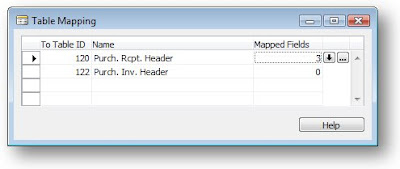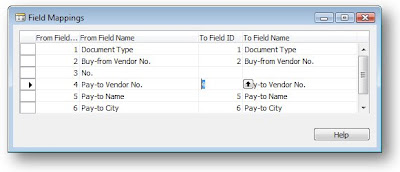This posting was first published on the Intergen Blog Site on the 12th June.When I came to New Zealand, nearly six years ago, I wanted to throw myself off a bridge with some elastic tied to my legs. I had heard that this was something Kiwis did and I wanted to fit in to my newly adopted environment. The world’s first commercial bungy jump started in the mid ‘80s in Queenstown, New Zealand. And it was there, on the Kawarau Bridge, that I took the plunge in 2002.
It was frightening but totally worth it. I knew it was safe but that didn’t stop me from being absolutely terrified. Sometimes in life, no matter how scared you are, you need to take a leap of faith. 5, 4, 3, 2, 1, bungeeeeeeeeey!
There are some similarities between bungy jumping and going live with an ERP solution and it was thinking about those similarities that inspired me to write this piece. Don’t panic, I’m not going to try and contort what I have to say about the ERP go live process to be all about bungy jumping using some clever metaphors. If, however, you do find yourself standing on the edge of an ERP implementation, you should read this article before jumping head first.
First of all, let’s consider the timing of the go live. How do you know when an ERP implementation is ready to go live? Is it when you have run out of time, or money? Often those, or some other seemingly arbitrary factor, are the main reasons for deciding on a go live date, but are you really ready to go live and how do you know?
The Six Ps
Like many things in life, prior preparation prevents pretty poor performance. In the case of an ERP implementation, the preparation comes in the form of user acceptance testing (UAT). User acceptance testing is often used as a project milestone for contractual reasons; completing UAT signifies that the solution has reached an acceptable level of stability and this in turn can be linked with the issue of who is going to pay for fixing defects. UAT is actually far more important than that — it is your key to project success. Imagine being the first person to bungy jump from the Kawarau Bridge. You’re standing 43 metres above the river with a bungy cord around your legs. Are you going to jump because you believe it should work in theory? I think not. Before you jump you’re going to do a little testing first: maybe throw a crash test dummy off the bridge to see if the harness holds, to ensure the rope is the right length. It’s important to iron out the issues in a safe environment first, and for an ERP implementation the safe environment is UAT.
Every issue that is found during UAT is one less issue that will need to be solved after go live, and the thing about go live issues is they can be really dangerous. When an issue occurs in a production system in a go live environment, it needs to be fixed quickly, and there is typically a great deal of stress associated with the issue. Being hurried in a stressful environment does not make for good programming and it certainly doesn't allow for well thought out design.
In order to avoid this stressful and potentially business-damaging situation you must start your preparation early, but what exactly is UAT. And, more specifically, what should you be testing?
Test the Entire Solution
In UAT, you are trying to simulate your go live situation. The closer you can get your UAT environment to your go live environment, the more confident you will be that you’re going to survive. Here’s a list of some of the things you need to be testing:
- The configuration of the production server hardware and server component installation, such as database, application server, SharePoint server, IIS, report server.
- The ability to install client software. It may be that you have a dedicated set of machines for the users to perform UAT, but if you are planning on installing client software as part of your go live, you should be testing your installation procedures by installing some software on some client machines that will be used for the testing. Go live day is not the day to hear, “Well it worked in the testing room - what’s different?”
- The configuration of your production ERP environment. The testing must be performed using the system with configuration settings as they will be in the live environment. It is inevitable that you will need to make some configuration changes during UAT in order to resolve issues; however, you must ensure that the same changes are logged and applied to the live environment. And you should also be aware that any change in configuration could invalidate all testing that has been completed so far.
- The data conversion process. Your data conversion process needs to be repeatable; you need to be able to extract the data to be converted consistently, hopefully using programs or scripts with a minimum amount of manual manipulation. The import of the data must obviously be done through dataports or other programs and the UAT is where you will test the success of those procedures. If you make changes to your data as a result of issues found during testing, you should ensure you can repeat this when you do go live and document the changes to the data conversion process.
- The modifications that have been made to the system: the new reports, forms, codeunits and external programs, interfaces, and reports all need to be tested. All too often this is the only thing that is covered in UAT. Once again, corrections may mean that previously accepted tests need to be re-tested. This is known as regression testing—it’s not what you fixed that’s important, it’s the things you broke along the way that you need to be aware of.
- The configuration of security privileges. This is to ensure that users can perform the tasks they need to perform without getting error messages and also to ensure that users do not have access to the data that they are not privileged to see.
Plan your testing and test your plan
The only way to have a successful UAT is to write down what you plan to test and record the issues you have found when they are tested. When you need to make the decision to go live or not, you will want to see the list of business process with lots of little ticks against them showing that they have been successfully performed. Remember the problem of regression testing: when you make a change to configuration, data conversion, or programming, you may as well erase all the ticks you have so far – it’s not what you fixed that’s important, it’s what you may have broken. If there are issues, you want to know what they are before you go live; it’s OK to go live with issues, it’s just important to know beforehand they are there and to have taken an informed decision.
When it comes to preparing test cases—well that’s another posting in its own right. Maybe one of our QA team can offer some advice in that area.
Get Some Help
If you have done your job properly, the go live should be painless. There may be a few surprises, but by and large you’ll be going live knowing that the critical things are going to work. It’s important to have good people around to help you through the go live process. When you’re standing on the platform with your towel wrapped tightly around your ankles, gazing at the horizon, it’s good to know that if you do freeze up, one of the professionals stood behind you is going to be quite happy to give you a little push.



